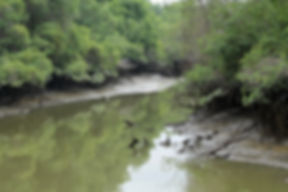
We invite you to learn about these wonderful species, bottlenose dolphin, birds and humpback whale. Here download field guide on these species written by Dr. Fernando Félix.
And Handbook Guide, to learn about our Ecuadorian Coast written by Ruby Centeno de Félix.
Enjoy them!
CONSERVATION OF THE ECUADORIAN BIODIVERSITY
Time for English and Spanish supports the conservation of the “Protected Forest El Paraíso Hill” in Guayaquil and also promotes responsible whale watching. In this page you can download for free two books written by Fernando Felix addressing these issues.
The “El Paraiso” reserve was created in 1989, but its extension has been reducing due to the pressure exerted by urban growth. The reserve originally had a surface of 420 hectares but currently is 299 hectares of which 160 are forest. This reserve contains the last remnant of the Ecuadorian native coastal forest within the urban perimeter of Guayaquil.
This stunning forest has lost connectivity with the coastal mountain range that finalize in the Estero Salado (estuary), affecting mainly to mid-size and large mammals who need extensive areas. El Paraiso forest does not contain monkeys nor deers, only small mammals such as squirrels, opossum and bats. However, there is an important diversity of birds, some of them in risk of extinction; that is why it is necessary to make efforts to protect this area from destructive human activities such as logging, fires and informal settlements.
Humpback whales arrive every single year to the Ecuadorian Coast between June and October looking for tropical waters for breeding. They belong to the Southeastern Pacific stock which migrates along the west South America coast from Antarctic where feeding grounds are located and the tropical zone between Ecuador and Panama where reproduce. Humpback whales are huge animals reaching 16 m in length and up to 40 tons in weight. All the reproductive process occurs in tropical waters, and calves born after 12 months of gestation.
Whalewatching started in Ecuador in 1994 and is so popular that dozens of thousands people go to the sea to admire these animals in the wilderness every year. The humpback whale is a coastal species; so it is not necessary to go that far into the ocean to find them. In some strategic sites it is possible to watch the whales from the coast. Humpbacks are famous because they like to breach out the water and hit the surface whit flukes and flippers.
The approach of tourist boats could be a potential threat for whales if this process is not made with responsibility. Specific regulations on the procedure to watch whales have been developed in order to keep a safe distance and to limit the time with the animals. Despite regulations, this is not enough if tourists, skippers and all involved in the activity do not follow them.
Video
Students attending the Spanish Courses can participate in cultural activities such as dolphin and bird observation and whale research.
(At very convenience price).
For further information about our field trips, feel free to contact us.
Our Spanish Program gives you the opportunity to immerse yourself in Ecuadorian Culture and Wildlife.
Download for free our
Handbook Guide



